'The Natural' at 35: Here's how Robert Redford hit that explosive home run
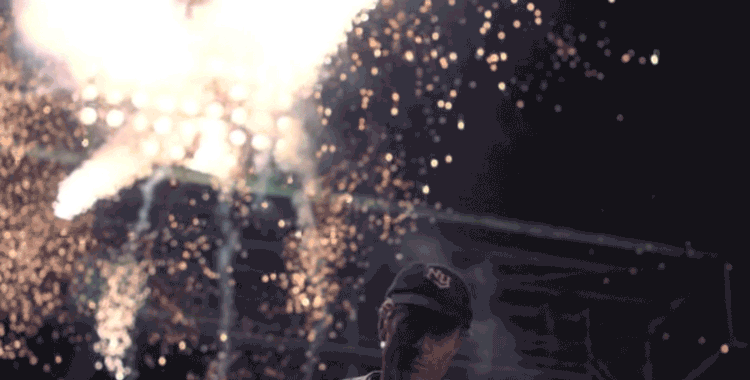
Redford and producer Mark Johnson look back at making the film’s iconic finale.
Thirty-five years ago, Robert Redford stepped into the batter’s box in a Buffalo stadium, and smashed a home run that immediately entered the Sports Movie Hall of Fame. Held aloft by composer Randy Newman’s soaring score, and director Barry Levinson’s literally explosive imagery, the climactic scene of The Natural is on instant replay in the minds of moviegoers who saw it in theaters on May 11, 1984 or in its three-decade afterlife as a home entertainment and cable staple.
The Natural had a regular place in my family’s VCR in the mid-’80s, and I’d rewind the final scene multiple times in order to watch Redford’s blast shatter the stadium lights, and then take his victory lap through a shower of sparks. I wasn’t what you’d call a die-hard baseball fan, but I loved Richard Donner’s Superman, and that home run is a comic book moment on par with Christopher Reeve reversing the Earth’s rotation. “It’s pretty spectacular,” agrees the film’s producer, Mark Johnson. “And, needless to say, it does not exist in the Bernard Malamud book.”
Yeah, about that book. It’s no secret that if you were keeping score of a movie’s fidelity to its source material, The Natural would finish towards the back the pack. Published in 1952, Malamud’s first novel took its inspiration from various bits of baseball lore, including the shooting of ’40s-era first baseman Eddie Waitkus and the infamous Black Sox scandal of 1919. The film version follows the broad strokes of the book charting the journey of Roy Hobbs (Redford), a gifted ballplayer whose career is derailed after he takes a bullet in the gut fired by a female fan.
Fifteen years later, he makes a last run at major league stardom, joining the failing New York Knights as the team’s oldest rookie. But armed with his trusty bat, Wonderboy, he still hits the ball with the power of a young man, knocking it around and out of every park he plays in. With Roy at the plate, the Knights have a real shot at winning the pennant — great news for the players, but bad news for the team’s owner, the Judge, who will possess the team in full if they have another losing season. So he makes a devil’s bargain with Roy: throw the pennant-clinching game and he’ll go home with cold hard cash instead of a title.
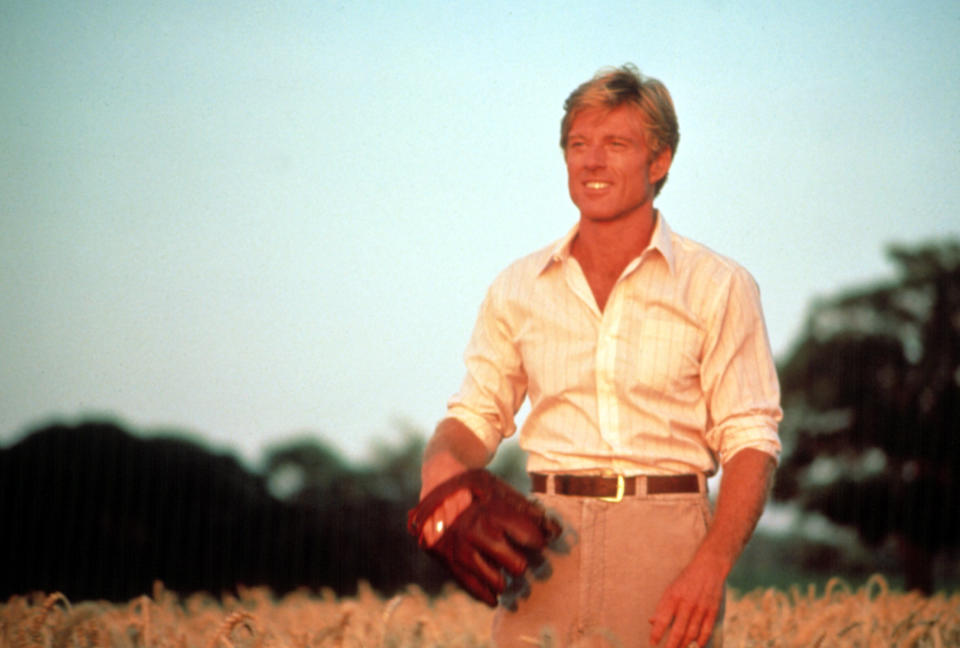
It’s here that the film’s screenwriters, Roger Towne and Phil Dusenberry, toss the novel into the bleachers. In Malamud’s downbeat finale, Roy accepts the bribe, only to have a last-minute change of heart. He strikes out in his final at-bat, though, and his arrangement with The Judge is subsequently leaked in the papers by unscrupulous newsman Max Mercy (played by Robert Duvall in the film). The book ends with a dejected young admirer pleading with him to “say it ain’t so,” — a deliberate echo of Shoeless Joe Jackson’s apocryphal encounter with a fan after the Black Sox scandal was exposed.
All in all, this wasn’t the kind of ending that was going to leave audiences cheering.
“I loved Malamud’s book, I tried to get it made for 10 years. I was told that, from a studio point of view that baseball doesn’t fly commercially,” Redford explained to Yahoo Entertainment. So when he finally got the go-ahead, he knew they had to change the finale. “I thought, '...even though you’re probably going to disappoint a lot of Malamud fans because you can’t have the guy strike out at the end, you’ve got to go the other way completely.’ But I thought it would be a better film, it wouldn’t be a downer.”
“We had a joke that when we showed the film to the studio that put a lot of money into this expecting big commercial thing, we going to have Roy strike out and just cut to black and say, ‘The End,’” said Johnson, with a laugh. “And then just watch a bunch of executives have coronaries.”
Needless to say, that first studio screening proved mercifully heart attack free. But over the years, the filmmakers have been taken to task for radically changing Malamud’s novel, even if the author himself is said to have enjoyed the movie, happy ending included. “The movie is very different from the book,” Johnson stressed. “There are some narrative and thematic similarities, but it’s quite different.” Perhaps the biggest difference is the way Levinson heightens the mythic qualities embedded in Malamud’s original narrative. The book’s themes of sin, temptation and redemption are given an even grander canvas onscreen, with the director and his cinematographer, Caleb Deschanel, crafting shots that take their inspiration from comic books, tall tales and Bible stories.
It’s no accident, for example, that Roy’s childhood love, Iris (Glenn Close), radiates angelic light when she reappears in his life nearly two decades later. And in the middle of his climactic at-bat, his wound re-opens like a stigmata, bloodying his uniform. Even the final game takes place in a kind of purgatory between heaven and hell: the field is bathed in white light, while the Judge’s office is enveloped in gloom. Against this backdrop, Roy’s home run is the only, well, natural ending for a movie that adopts a larger-than-life tone from its opening frames.
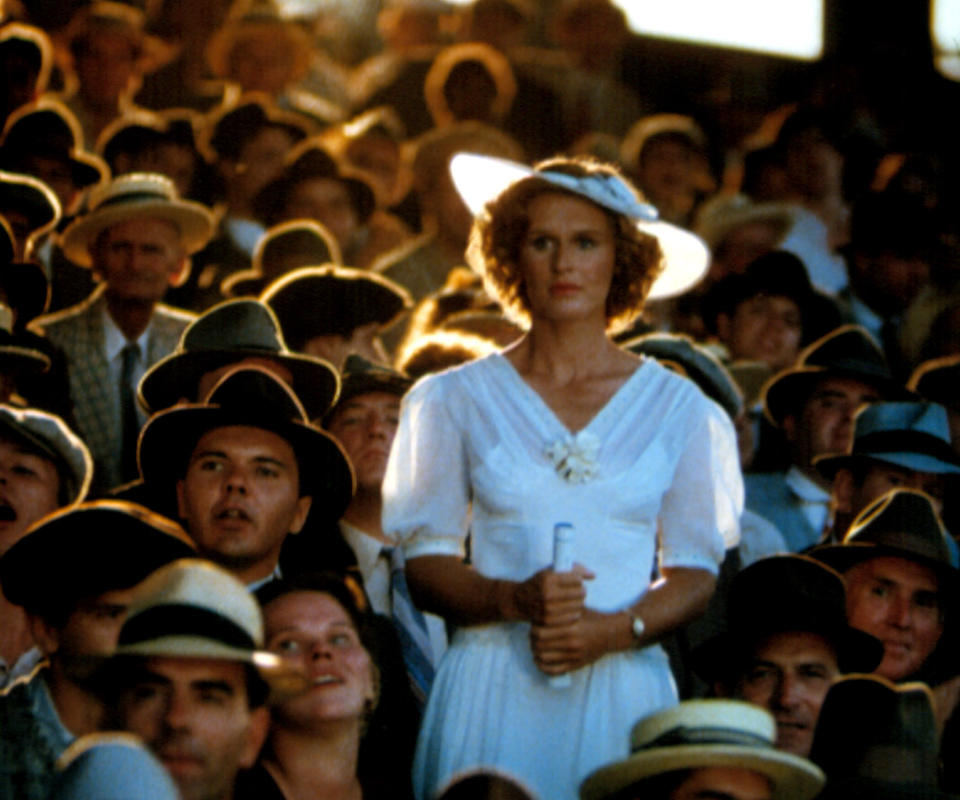
Johnson credits Levinson and Deschanel with devising the light-smashing finale, which he doesn’t recall reading in early versions of the screenplay. “The home run was always in Roger’s script, but not to the degree that Barry and Caleb shot it, where it became this pyrotechnic celebration.” Throughout the movie, Roy had already taken big swings that yielded big results, knocking baseballs high into the bleachers and, at one point, smashing a scoreboard clock to smithereens. For the last scene, they had to think even bigger. “We’d seen home runs in the movie, so it became, ‘How do you top that?’” Johnson explained. “So we’d say, ‘OK, it goes over the fence. No, it goes over the bleachers!’”
The solution presented itself when Johnson, Deschanel and Levinson visited the location where all of the baseball sequences would be shot: Buffalo’s little-used War Memorial Stadium. Nicknamed “The Rockpile,” the rundown 46,500-seat venue had been constructed in 1938 and thus didn’t require a lot of production design to transform it into an early 20th century ballpark. Gazing at the stadium’s lighting configuration provided them with the “Eureka” moment they needed. “It became clear that the ball should go into the lights.”
A newer ballpark would never have allowed a major motion picture — even one starring Robert Redford — to treat its lighting set-up as a fireworks display. But the Rockpile had largely fallen out of use by the early ’80s, making its owners more receptive to the filmmakers’ pitch. Shooting began in Buffalo in August 1983 and stretched into October, with the final game being among the last sequences shot. By that time, the temperatures were plunging, particularly at night when Redford and the other actors would suit up to take the field.
Johnson remembers the difficulty in filling the stands with extras for a sequence that’s thrilling to watch onscreen, but wasn’t so thrilling to film. “Shooting movies to begin with can be quite mechanical, and baseball games are really by the numbers. Like, for a double play, you need 12 really quick shots of the pitcher letting the ball go, the batter striking it, the ball hitting somewhere, the shortstop picking it up. You need all those pieces to build a baseball game. I can’t remember how many nights it took to film that final game, but it was freezing and we had trouble getting extras to come.”
Building Roy’s triumphant home run also required a lot of individual pieces, including multiple shots of the opposing pitcher’s wind-up and Hobbs swinging his bat. “It was thrilling because I got to do my own hitting and fielding and pitching. That felt great. I loved playing baseball and I loved the Boston Red Sox and Ted Williams and I wanted to go in that direction [as a ballplayer] if I could, but never could until this.”
Johnson confirms that Redford did all of his own batting for the film, and made some solid hits.
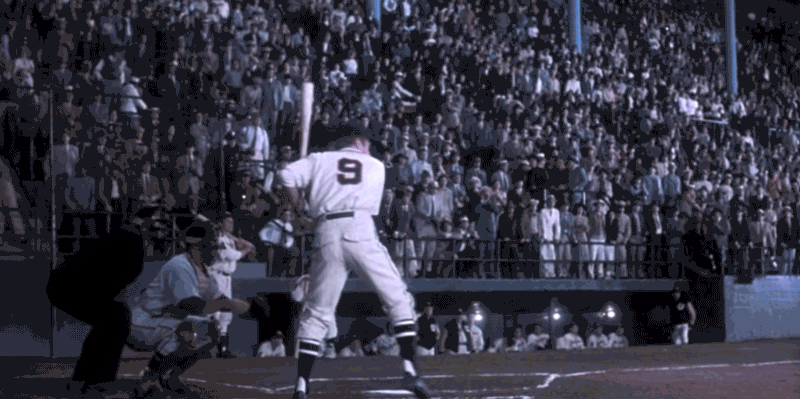
Of course, when the time came for the ball to defy gravity and light up the night sky, it required a stronger launch. “We used a cannon and aimed the ball at the lights,” Johnson said. “The special effects man had an electric board that connected a charge to different lights, so when the first one was hit, he set off a whole sequence of the others.”
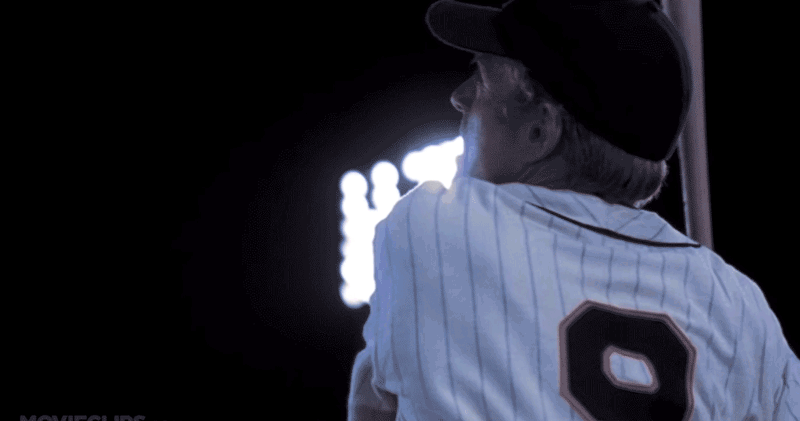
Meanwhile, down on the field, Levinson had four cameras rolling to capture the wave of explosions as well as the awed reaction of the crowd. A first aid team was on hand in case of any injuries, but Johnson notes that nobody was ever in any danger of taking a glass shower. “The special effects man rigged the bulbs so that they could explode and rain this glass-like substance down,” he revealed. “It was probably a version of what they call sugar glass, which would not damage anybody if it landed on them. There was nothing damaging or irreparable in what we did.”
It was a good thing no permanent damage was done, because the filmmakers had to blow up the Rockpile’s lights multiple times over the course of multiple nights to get the sequence the way they wanted it. For the shots that didn’t feature the lights themselves, sparks still showered onto the field courtesy of crew members who stood above the set and sprinkled down sparkler-like embers, which can be glimpsed bouncing off of Redford’s hat and uniform at certain points during his lap around the diamond.
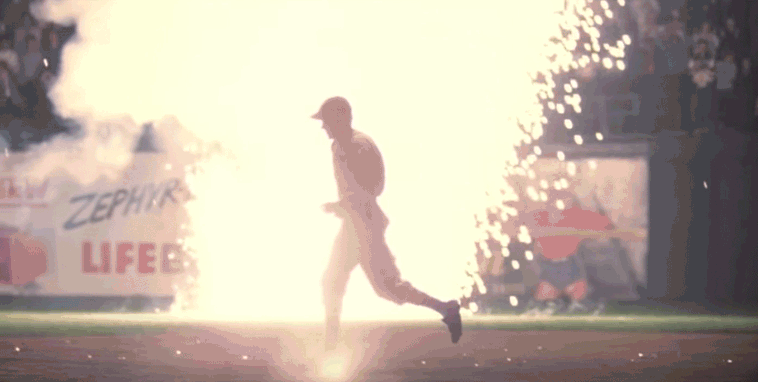
“If you look at the finished film, you’ll see there are a number of shots, many of them in slow motion,” Johnson said. “At that time, you couldn’t just film a shot at normal speed and slow it down in the editing room. So we had to shoot in both real time and also slow-motion. I know we didn’t do it in just one night — we did it over a couple. And Barry’s a very specific and demanding director, so he would have said, ‘OK, that was great — let’s see if we can do better.”
The filming of the home run sequence was so drawn-out, that by the end of it, there was no joy in Buffalo at watching the Rockpile lights explode over and over again. “The excitement wore off pretty quickly. Every hour, we would raffle something off to the extras in an effort to keep everybody in their seats as long as possible. At a certain point, people said, ‘Unless you’re raffling a small Italian sports car, I’m leaving.”
For his part, Johnson was excited about what he saw happening on the filed during those long, long nights. “You could see the pieces of the scene; watching the fireworks come down and knowing that it was going to be in slow motion gave it a real balletic quality.” But it wasn’t until he saw the footage paired with Randy Newman’s score that he knew they had a winner. “When you see it in the context of the movie and with Randy music, it's a vision — it's like poetry,” he says now. “It’s a remarkable sequence, and the fact that we pulled it off is amazing. Shooting baseball is painstakingly precise, and you’ve got to make sure you have all the pieces to make it look effortless.”
The Natural is available to rent or purchase on Amazon, iTunes and Vudu.
Read more from Yahoo Entertainment:
'The Mummy' at 20: Brendan Fraser reveals 5 things you didn't know, including how he almost died
The 'Forrest Gump' sequel that never was, from O.J. to Oklahoma City
Want daily pop culture news delivered to your inbox? Sign up here for Yahoo Entertainment & Lifestyle’s newsletter.


